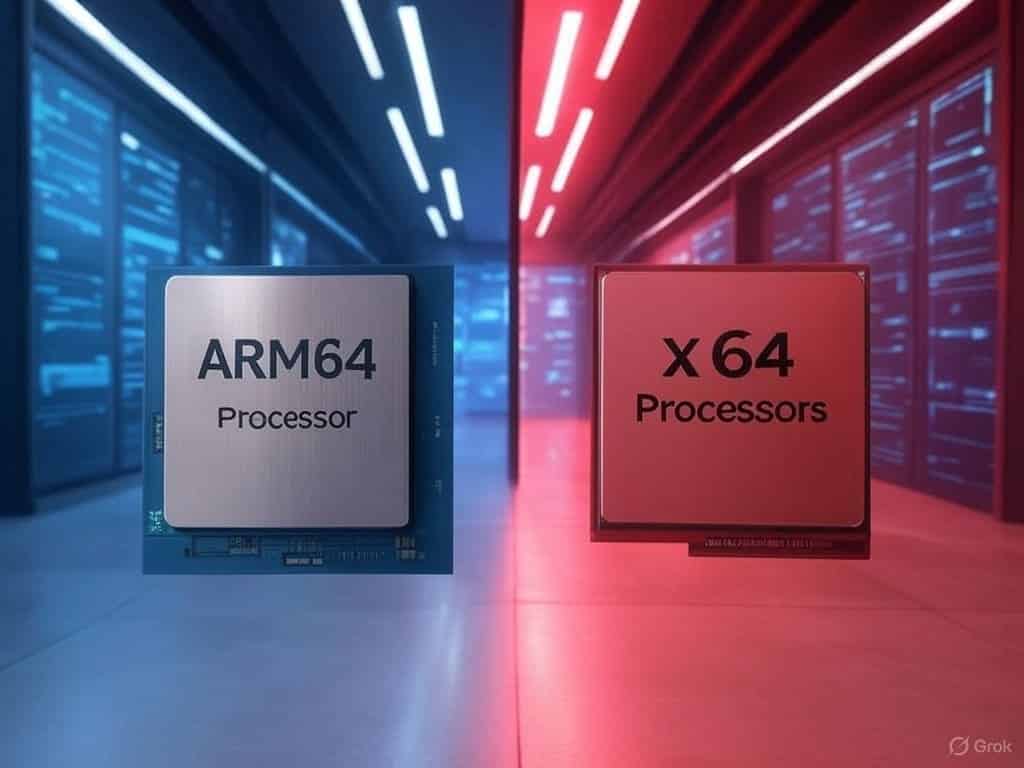Here’s the translation of the provided text into American English:
In the fast-paced world of technology, choosing the processor architecture can significantly influence performance, efficiency, and operational costs. While consumers explore ARM processors for personal use, the enterprise sector is focused on servers. The chosen architecture can determine the efficiency of cloud infrastructure, application performance, and operational costs.
What is CPU architecture?
CPU architecture defines the fundamental design and operation of the central processing unit. It establishes how instructions are processed and executed at the hardware level. In simple terms, architecture dictates how a processor:
- Interprets machine instructions.
- Manages data flow.
- Handles computational tasks.
- Controls memory and register allocation.
A simple analogy is to consider CPU architecture as the design of an engine, while software represents the driver’s instructions, and the operating system functions as the vehicle’s dashboard.
Comparison between ARM and x86 in server environments
The ARM and x86 architectures differ in their design and operational approach. ARM, based on a RISC (Reduced Instruction Set Computing) model, executes simpler instructions with lower power consumption. In contrast, x86, designed under the CISC (Complex Instruction Set Computing) model, supports more complex instructions, optimizing performance with fewer lines of code.
Performance and energy efficiency
ARM64 has established itself in the market due to its energy efficiency, with up to 50% lower power consumption compared to x86. This is key in data centers, where reducing electricity consumption leads to significant savings in operational costs.
Recent performance tests showed that ARM-based servers processed 54% more requests than their x86 counterparts, with significantly lower latency. This makes them attractive for cloud applications that demand scalability and efficiency.
| Metric | ARM | x86 |
|---|---|---|
| Requests processed | 8,800 | 5,700 |
| HTTP failures | 0 | 0 |
| Requests per second | 32 | 21.67 |
| P95 latency | 383ms | 893ms |
Software compatibility
Software compatibility has historically been a hurdle for ARM in server environments, but advances in compilers and frameworks have narrowed this gap. Operating systems like Linux and Windows have optimized their distributions for ARM, and tools like Docker have improved compatibility with containers on this architecture.
| Software | ARM Support | x86 Support |
|---|---|---|
| Linux | Full (Ubuntu, RHEL, etc.) | Universal |
| Containers | Docker compatible | Full support |
| Web servers | nginx, Apache | All supported |
| Databases | MySQL, PostgreSQL | Full compatibility |
Costs and availability
ARM processors feature a more streamlined cost structure, with lower licensing fees and designs that are more thermally efficient. This has allowed cloud providers, such as AWS with its Graviton processors, to offer high-performance ARM solutions with lower operational costs.
| Factor | ARM | x86 |
|---|---|---|
| Hardware cost | Lower | Variable |
| Power consumption | Lower | Higher |
| Support costs | May require specialized knowledge | Extended support |
Conclusion: Which architecture to choose?
The choice between ARM and x86 is no longer a binary decision. Although x86 continues to dominate due to its maturity and established ecosystem, ARM has emerged as a viable alternative, especially in environments where energy savings and scalability are priorities.
Companies managing fleets of servers must consider factors such as software compatibility, operational costs, and the specific needs of their applications. In this context, solutions like RunCloud facilitate unified management of ARM and x86 servers, allowing a flexible and optimized transition towards more efficient architectures.

